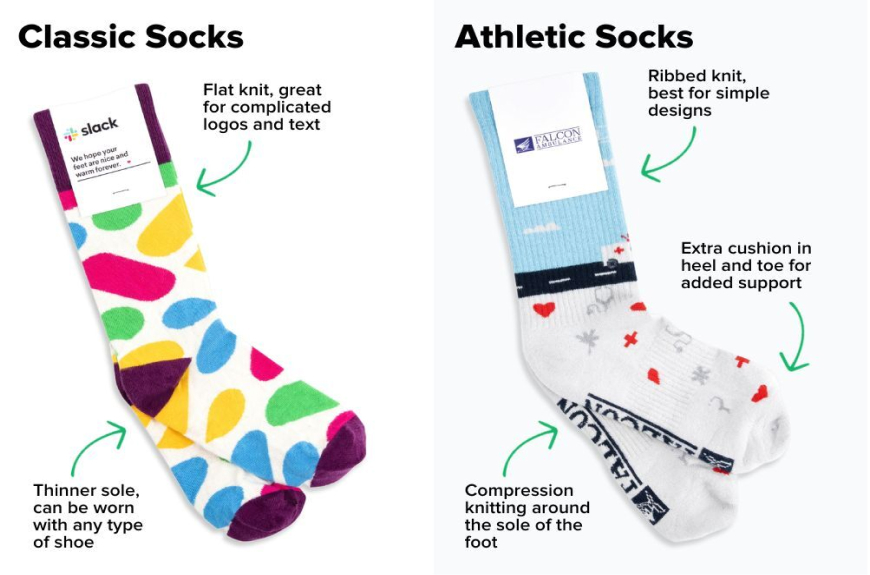Socks are an essential part of our daily wardrobe, yet we often overlook their importance. The right pair of socks can make a significant difference in comfort, performance, and style. This blog post will guide you through the process of selecting the perfect socks, exploring various materials, their uses, and providing helpful tips to ensure your feet stay happy all day long.
Understanding Sock Materials
When it comes to sock materials, there are several options to choose from. Each material has its unique properties and benefits.
Cotton is a popular choice for everyday wear. It's soft, breathable, and affordable. However, cotton tends to retain moisture, which can lead to blisters during intense activities.
Wool, particularly merino wool, is excellent for temperature regulation. It keeps feet warm in cold weather and cool in warm weather. Wool also has natural odor-resistant properties.
Synthetic materials like polyester and nylon are known for their moisture-wicking abilities. They're often used in athletic socks to keep feet dry during intense workouts.
Choosing Socks for Different Activities
The type of activity you're engaging in should guide your sock choice. For everyday wear, cotton or cotton-blend socks are usually sufficient.
For athletic activities, consider moisture-wicking synthetic socks or wool blends. These materials help prevent blisters and keep feet dry.
For hiking or outdoor adventures, merino wool socks are an excellent choice. They provide cushioning, regulate temperature, and resist odors.
The Importance of Fit
A well-fitting sock is crucial for comfort. Socks that are too tight can restrict circulation, while loose socks can bunch up and cause blisters.
Look for socks with a snug fit around the foot and ankle. Some socks feature arch support or cushioned soles for added comfort.
Sock Height Matters
Sock height isn't just about style; it's also functional. Ankle socks are great for low-cut shoes, while crew socks provide more coverage and are suitable for boots or high-top sneakers.
Knee-high socks are often used for formal wear or specific sports like soccer. Consider your shoe type and activity when choosing sock height.
Care and Maintenance
Proper care can extend the life of your socks. Always follow the care instructions on the label.
Turn socks inside out before washing to remove more dirt and sweat. Avoid using fabric softeners, as they can reduce the moisture-wicking properties of performance socks.
Customization Options
For those looking to add a personal touch, custom socks are a fun option. You can add logos, patterns, or even photos to create unique socks.
Custom socks make great gifts or promotional items for businesses. They're a creative way to express your personality or brand identity.
Sustainability Considerations
When choosing socks, consider the environmental impact. Made in USA socks often have a smaller carbon footprint due to reduced transportation.
Some brands use recycled materials or organic cotton in their socks, offering more sustainable options for eco-conscious consumers.
The Merino Wool Advantage
Merino wool deserves special mention. It's superior to synthetic materials and cotton in many ways, offering natural odor resistance, moisture management, and temperature regulation.
While more expensive, merino wool socks are durable and versatile, making them a worthwhile investment for many activities.
Sock Design Tips
If you're interested in designing your own socks, consider factors like color contrast, pattern size, and placement of designs. Simple, bold designs often work best on socks.
Remember that socks can be a fun way to add a pop of color or personality to your outfit, even in formal settings.
Understanding Sock Thickness
Sock thickness plays a crucial role in comfort and function. Thin dress socks are ideal for formal shoes, while thicker socks provide more cushioning for athletic activities or cold weather.
Some socks offer variable thickness, with extra cushioning in high-impact areas like the heel and ball of the foot.
The Best Materials for Different Seasons
Different materials perform better in various seasons. Cotton is great for summer, while wool blends excel in winter. Synthetic materials are versatile and can be worn year-round.
Consider having a variety of sock materials to suit different weather conditions and activities.
Wrapping Up
Selecting the perfect socks involves considering materials, activities, fit, and personal style. Whether you're looking for everyday comfort, athletic performance, or a unique fashion statement, there's a perfect sock out there for you. Remember, good socks are an investment in your foot health and overall comfort. Take the time to choose wisely, and your feet will thank you.


